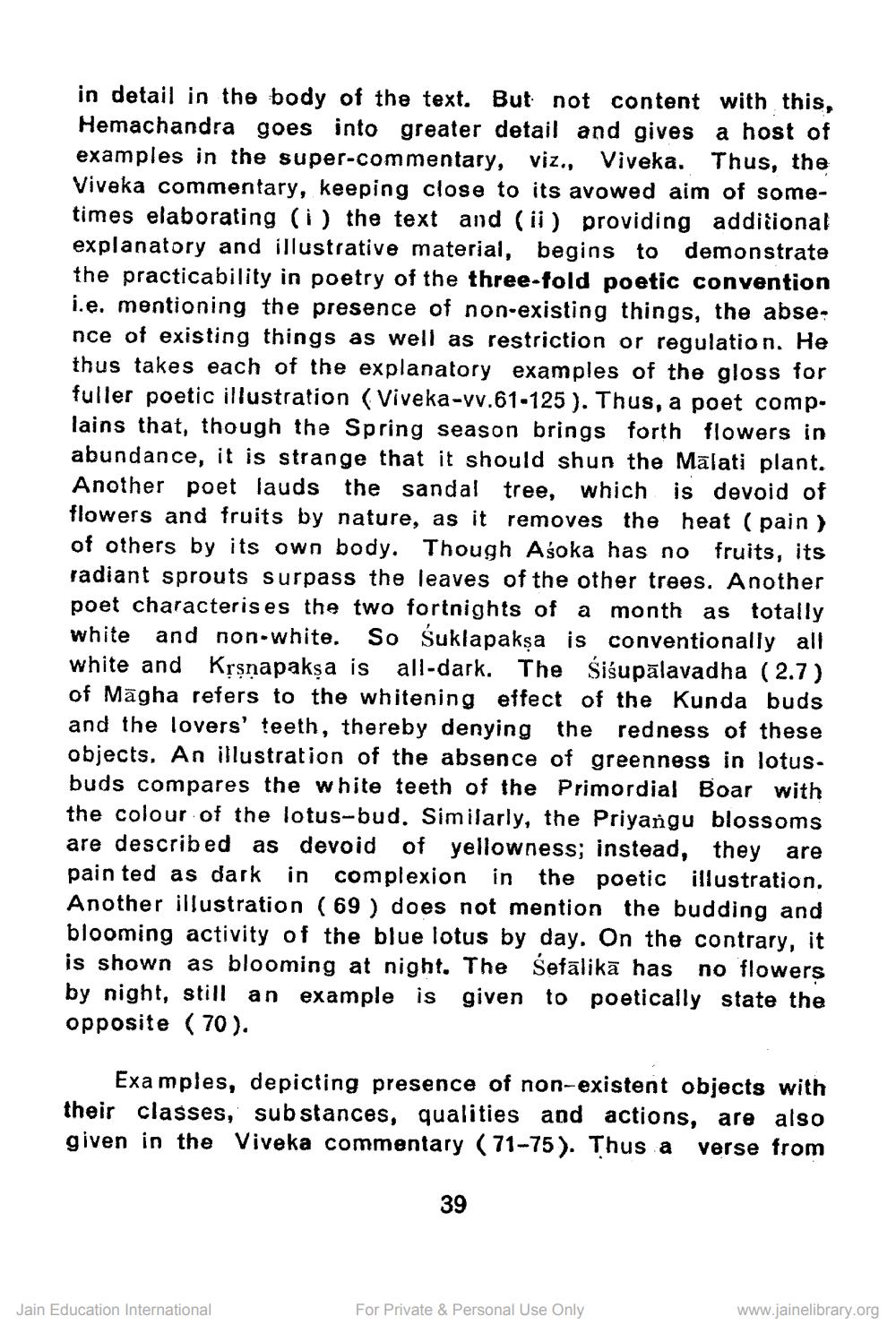________________
in detail in the body of the text. But not content with this, Hemachandra goes into greater detail and gives a host of examples in the super-commentary, viz., Viveka. Thus, the Viveka commentary, keeping close to its avowed aim of sometimes elaborating (i) the text and (ii) providing additional explanatory and illustrative material, begins to demonstrate the practicability in poetry of the three-fold poetic convention i.e. mentioning the presence of non-existing things, the abse nce of existing things as well as restriction or regulation. He thus takes each of the explanatory examples of the gloss for fuller poetic illustration (Viveka-vv.61-125). Thus, a poet complains that, though the Spring season brings forth flowers in abundance, it is strange that it should shun the Malati plant. Another poet lauds the sandal tree, which is devoid of flowers and fruits by nature, as it removes the heat (pain) of others by its own body. Though Aśoka has no fruits, its radiant sprouts surpass the leaves of the other trees. Another poet characterises the two fortnights of a month as totally white and non-white. So Suklapakṣa is conventionally all white and Krsnapaksa is all-dark. The Siśupālavadha (2.7) of Magha refers to the whitening effect of the Kunda buds and the lovers' teeth, thereby denying the redness of these objects. An illustration of the absence of greenness in lotusbuds compares the white teeth of the Primordial Boar with the colour of the lotus-bud. Similarly, the Priyangu blossoms are described as devoid of yellowness; instead, they are painted as dark in complexion in the poetic illustration. Another illustration (69) does not mention the budding and blooming activity of the blue lotus by day. On the contrary, it is shown as blooming at night. The Sefālikā has no flowers by night, still an example is given to poetically state the opposite (70).
Examples, depicting presence of non-existent objects with their classes, substances, qualities and actions, are also given in the Viveka commentary (71-75). Thus a verse from
Jain Education International
39
For Private & Personal Use Only
www.jainelibrary.org




